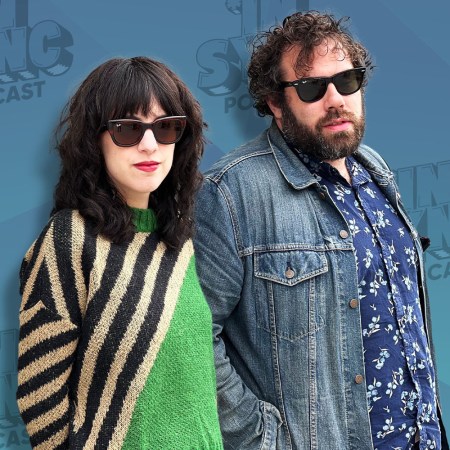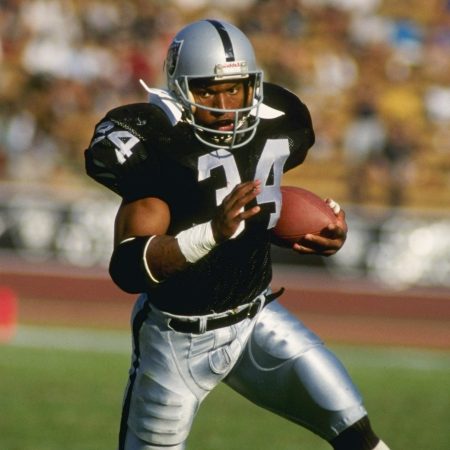Once upon a time, families gathered around the fireplace and tuned in to their favorite radio programs together. Sports broadcasts, talk shows, audio plays … hell, a radio program once convinced people that aliens were invading the earth.
Then screens came and slowly but surely stamped the form into oblivion.
Or so we thought.
Fast-forward some 70-odd years and the radio show has been reborn. We’re talking, of course, about podcasts, which have not only revived audio as a storytelling and newsgathering medium, but reinvented it. Where nationally syndicated radio shows tend toward a mass appeal, podcasts are more of a tribal phenomenon, far more specific in subject matter thanks to the ease of making, distributing and listening to them.
You can listen to a podcast about screenwriting. A podcast about menswear. And about 8 million podcasts about true crime. Because somewhere, there is an audience for all of those things, waiting with smartphones in hand for something to listen to while they multitask their way through the day.
With that in mind, we’re sure more than a few of you have thought about starting your own podcast. “I’m just as funny as that guy!” you shout to your significant other as they chuckle behind their earbuds; “I know more than this moron!” you think to yourself on your commute to work.
The issue, of course, is knowing where and how to get started.
So we called up Nick Martell, who along with his partner Jack Kramer recently launched the MarketSnacks Daily Podcast, a 15-minute podcast that serves up business news with a side of good humor. In a few short months, their podcast has shot up to #2 on the iTunes Business Charts, so we decided to pick their brains on how they went from two guys arguing in a startup office to the voices behind a daily news show with listeners in the thousands.
An episode of MarketSnacks Daily
Below: Nick and Jack’s six-step guide for starting a podcast. Listen up.
Step 1: The Concept
Listeners turn to podcasts for a combination of entertainment and self-education. So ideation comes down two key ingredients: knowledge and story. First, the topic has got to be something you not only give a damn about, but know something about. No one’s going to waste their time listening to your speculation about the NHL draft if you don’t know a body check from a stick check.
Second, you’ve got to be able to turn it into a story. Anyone can see the Reuters headline or Wikipedia entry on SeaWorld’s earnings report — but we jump in and find the nuggets of info on how its free-beer policy is upping sales at its snack bars, which is driving revenue growth. Suddenly, a boring financial statement turns into a storyline about alcohol saving the entire theme-park chain. Shamu would approve.
Step 2: The Gear
This one’s black and white: either your podcast has high-quality sound, or it doesn’t. And no one wants to waste time listening to obscured soundwaves from a brutal microphone that makes you sound like a ’90s voicemail. Fortunately, there’s some good equipment you can buy that’s worth the small investment. Here’s what you need:
- Mics: If you’re building out a studio at home, the Shure sm7b mics are top quality and used at CBS (might as well get two in case you interview someone cool — or just a buddy).
- Headphones: Not only do they look legit, but they help you hear yourself in real time (everyone’s “own voice” sounds annoying at first, but, trust us, it helps hearing it through huge headphones while you speak). We use the Sony Studio Monitor Headphones because they’re just large enough to have a presence but don’t make us look like air traffic controllers.
- Recording Device: To plug the mics and headsets into one place, you’ll need a recording device. Focusrite Scarlett is small enough to sit on a table without breaking it, and plugs into all the above.
- Editing Program: Garageband is the usual and cheapest, but you can upgrade to some fancier stuff, too. The key is keeping the interface as easy possible, because post-pod you don’t want to spend the whole day editing and editing and editing. Some software or websites, like Anchor, can help with the editing and distribution process so you can finalize, share and upload your pod.
Need something more portable but still ridiculously high quality? We’ve got a set of Marantz professional recorders and mics for travel. They only weigh a few pounds and fit in a camera bag. I literally brought this on my honeymoon over the summer and we did the podcast remotely while I was in Italy and my co-host was in New York. It was so seamless no one knew we weren’t together. And yes, my newlywed wife was an angel about it.
Step 3: Episode Prep
“Burstiness” — we love the concept. It’s how we generate our creative ideas around a story, and it’s described perfectly by Adam Grant in his Work/Life podcast on how The Daily Show preps for episodes. We toss out a topic, then joke around about it until we get a storyline, build out an outline, and improv from that outline on air. Here’s an example of how it goes down:
- Research: We begin by researching potential stories (“Lululemon’s earnings report”; “Chipotle unveiled new menu items”; “Snap’s ad sales are plummeting”; “IBM’s suing Groupon”).
- Pitch: Then we pitch each other on which items to cover, and how (“Let’s dig into Lulu’s numbers to see if its pivot to guys is paying off”).
- Outline: We then riff back and forth on the information to see if it’s worth talking about on the pod (“Hey, Jack, you’re wearing Lulu khakis right now — are they actually not crushing your balls?”)
- Improv: Once we’re satisfied with the topic and the banter back and forth, we have the core info and the fun storyline, so we put it together for a piece on the show.
People always ask if we write it all beforehand or if it’s totally freeform — to be honest, it’s 75% improv. No one wants to hear you read from a script. We’ve got a few bullets outlining the direction of the story to keep the momentum on pace. Then we spontaneously add jokes on the topic, the company or each other along the way (always make fun of yourself and your co-host). It’s a very organized chaos: we’re always moving the storyline ahead so you’re learning about Lululemon’s business strategy, but we’re dropping in the right mix of personal humor about Lulu khakis to keep you hooked.
Step 4: On Air
We’ve got five key rules unique to the medium that every podcaster should embrace:
- Keep Formats Simple: Every story from Bambi to Wedding Crashers has a beginning, middle and end. Your podcast is probably great, but it’s no exception. Make sure you’ve got a clear intro, middle content and then a conclusion. Your listeners will expect it, and you’ve got plenty of room to get creative in between.
- Mistakes Are Good: This isn’t the State of the Union, where a wrong word choice leads to war. Pods are casual. They’re personal. They’re conversations with a buddy (the hosts). When we accidentally said “General Motors has a failing new Greek yogurt,” we don’t edit it out to “General Mills.” We laugh about it on air and keep rolling.
- Get Personal: What’s made podcasts so successful lately is the deep connection listeners get with you, the host. So we’re always dropping details on our personal lives that listeners can connect with, like how Jack’s from landlocked Vermont or Nick hates denim. Our listeners can empathize with that. We love how attached and committed our MarketSnacks listeners are; when we mispronounced the name of the sparkling water company “LaCroix,” a listener sent us a box of it. We also feature a “Fact of the Day” from a listener at the end of every episode, and they constantly send us new ones to connect more with the pod.
- Your Listeners Multitask — Respect That: It’s a fact. Watching TV means you’re staring at a screen with a bunch of attention. Podcast listeners have AirPods in because they’re on a treadmill, commuting to work or just walking around. Since you don’t have their undivided attention, respect that. Don’t burden your pod with heavy data or content that requires 100% attention. But definitely emphasize key points to make sure you’re grabbing their attention, like “Facebook just lost as much value as all media companies in the US combined! That. Is. Huuuuge!”
- Use First Names: Sounds obvious, but it isn’t. Your listeners can’t see you, so they may not know who’s talking. If it’s not just you, call out your co-host’s name so listeners actually know who’s speaking.
Step 5: Editing
We signed with a great production company called Cadence13 who handles all our editing, distribution and ad sales. But Anchor and Garageband let you edit online yourself, or you can hire a freelancer — it can take an hour for a 15-minute podcast episode if you’re starting with 60 minutes of recorded footage to go through. Decide if you want to just be a content guy and save time outsourcing the editing … or maybe you want to jump in and do the whole thing.
Step 6: Marketing and Distribution
You live and die by Apple iTunes. The reality is iTunes makes up 70% of the podcast market — the rest is split between platforms like Spotify, Stitcher and Google. MarketSnacks has been fortunate to be featured by Apple and become a top trending podcast in Business News because our newsletter readership helped us grow fast. But if you don’t have a big following already, don’t worry: having a call to action that gets listeners to subscribe/rate/review is critical. So own it. Here’s how.
- Call to Action: Since it’s hard to “share” podcasts digitally on social media or even via email, you’re most likely to spread by “word of mouth” or get discovered by existing podcast listeners on iTunes. And the key to both is a “call to action” at the end of your episode asking a small favor from your listeners. Be honest and fast about what you’d like them to do, which is …
- Subscribe/Rate/Review: For your call to action, ask your listeners to do three things: subscribe, rate and review. Your listeners love you (that’s why they’re there) and want to help, so ask them to click “subscribe,” give you a 5-star rating and write a review on iTunes. Apple tracks those in their mysterious algorithm of which podcasts to promote and highlight. All three are awesome, but even just one is vital for Apple. It’s the best thing they can do, other than screaming it from a rooftop (that type of word of mouth doesn’t hurt either). Trust us, this works.
To listen and subscribe to the (free!) MarketSnacks Daily Podcast, check them out on the Apple Store, Stitcher or Art19.
Whether you’re looking to get into shape, or just get out of a funk, The Charge has got you covered. Sign up for our new wellness newsletter today.






















